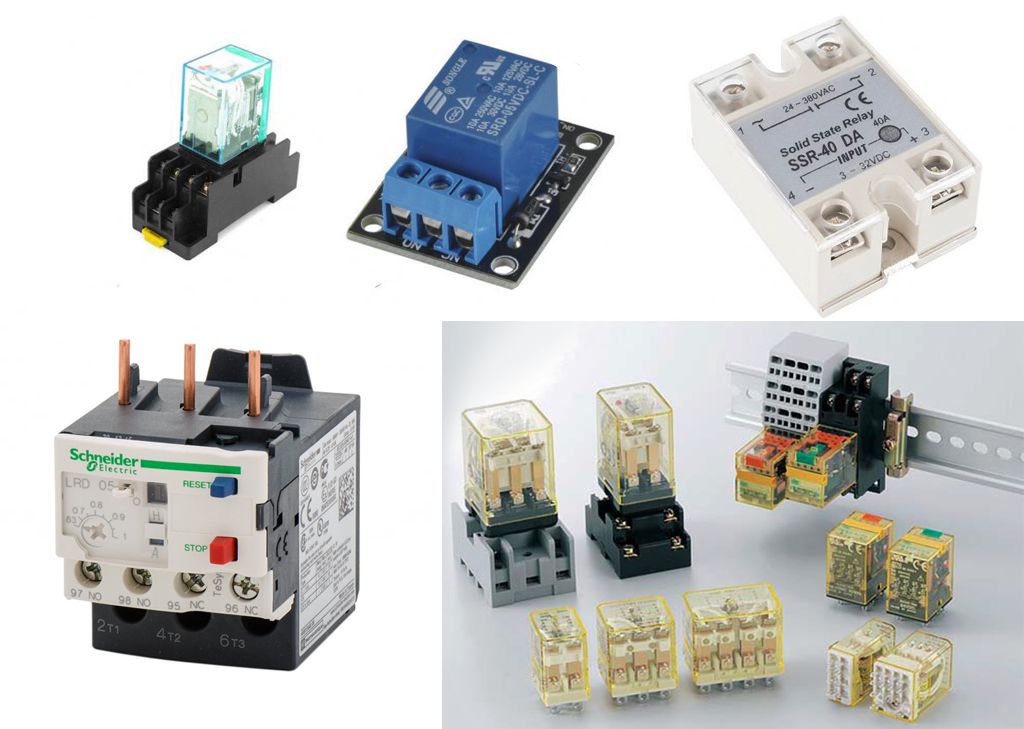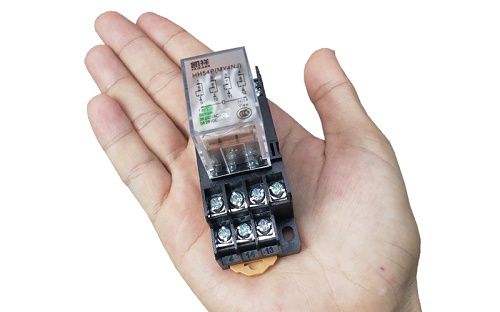What is relay? Things to know about relays
Relays are devices used mainly in the electronics industry. You will easily find relays in devices such as industrial electrical cabinets, wall cabinets, refrigerators or control cabinets. The main function of the relay is to monitor and turn off the power source when an overload occurs, helping to protect machinery and ensure safety.
Contents
If you want to better understand relays and its practical applications, let's explore useful information with EMIN right in this article!
What are relays used for?
Relay, also known as "Relay," is an important device and is widely used in automatic control boards. With the task of protecting electrical equipment in the home, relays help prevent unexpected overload incidents. Besides, it also plays the role of cutting off the current flowing through the coil, creating a magnetic field to attract the young iron core and changing the switch state.

Normally, relays operate with alternating current of 500V capacity and 50Hz frequency. However, some specialized types can withstand direct current up to 150A and 440V, meeting the needs of use in more demanding environments.
Relay states
The relay has two main states: ON (open) and OFF (off). This state will change depending on whether there is current flowing through the relay or not.
On each relay there are usually three symbols: NO, NC and COM, representing pins connected to specific functions:
- NC (Normally Closed): Is the pin that is normally closed. In normal state (OFF), the COM pin will be connected to NC, ensuring that current can flow.
- NO (Normally Open): The leg is normally open. When the relay turns ON, the COM pin will connect to NO, allowing current to pass through this pin. Conversely, when the relay is in the OFF state, this line will be interrupted.
- COM (Common): Is a common pin, connected to the standby source and is always connected to one of the remaining two pins (NC or NO) depending on the status of the relay.
Structure and operating principles of voltage relays and thermal relays
Structure of relay
Relays include main components such as electromagnets, driving levers, and input and output ports. When current flows through the coil of the electromagnet in the relay, this mechanism will create a magnetic force, changing the circuit state from normally closed (NC) to normally open (NO). To ensure a quick and stable switching process, a spring lever is often attached to the switching bar.
Principle of operation
When current flows through the first circuit, the coil of the electromagnet is activated, creating a magnetic force that attracts the contact in the circuit. This causes the second circuit connection to be activated. Conversely, when current stops being supplied, the spring pulls the contacts back to their original position, disconnecting the second circuit.
- Normally open relay (NO): In normal state, the contacts of the second circuit are not connected. Only when current flows through the magnet coil, these contacts close to allow current to flow.
- Normally closed relay (NC): In the default state, the contacts of the second circuit are connected, allowing current to pass. When the electromagnet is activated, the contact is pushed or pulled, disconnecting the current.
Functions and uses of relays
Relays are used to switch between multiple currents and voltages to different loads, via a control signal. This device plays an important role in separating control circuits from load circuits or isolating AC power supply circuits from DC power supply circuits, ensuring safety and efficiency in operation.
In addition, relays are also used to monitor and monitor industrial safety systems. When detecting unsafe situations, the device will automatically turn off power to the machinery to protect the system.
Some advanced relay types also support simple logic functions such as 'AND,' 'NOT,' or 'OR,' to help with sequential control or create safety interlock mechanisms in the system. control. This increases flexibility and reliability when used in industrial applications.
Popular types of protective relays today

5.1. Classified according to working principle
Intermediate relay
Intermediate relays are often used in electronic control circuit boards, acting as a bridge between control components such as PLCs or microprocessors and large capacity motors. The structure of this device includes magnets and a switching contact system. With a compact, modular design, intermediate relays are easy to install and replace, and are commonly used in electrical cabinets, control cabinets, and industrial machinery systems.
Electromagnetic relay
Unlike conventional switches, electromagnetic relays operate automatically using electric current without human intervention. This device protects components in the electrical system by isolating incidents, avoiding affecting unrelated devices through the switching mechanism.
This type of relay often appears in automatic control boards, responsible for switching on and off large currents that control circuits cannot directly handle. Electromagnetic relays come in many types with a variety of pins such as 5 pins, 8 pins, or 14 pins, of which the 14 pin type is the most commonly used.
Thermal relay
Thermal relays are indispensable devices to protect electrical equipment in homes, industries, and factories. This device automatically closes and switches the electrical circuit when detecting an overload current, helping to ensure stable operation of the system. Thermal relays operate on the principle of expansion of metal bars when heated, creating an effective safety mechanism.
Classified according to the principle of action of the actuator

Relays today have many types with diverse working principles and functions. Below are common classifications based on the principle of impact of the actuator:
Classified according to input parameter characteristics
Relay types in this group are classified according to the electrical parameters they measure or respond to, including:
- Current relay: Used to detect and control current in the system.
- Power relay: Used to monitor and protect power consumption.
- Impedance relay: Often used in electrical protection systems to detect changes in impedance in the circuit.
Classified according to structural problems
Relays are also classified based on how the actuators are connected in the system:
- Primary relay: Connected directly to the circuit that needs protection, helping to respond quickly when detecting a problem.
- Secondary relay: Connected to the electrical circuit through measuring devices such as transformers or current transformers, suitable for large, complex systems.
Conclude:
Through the information shared, EMIN hopes to give customers an overview of relays and its applications. We believe that this information will assist your business in choosing the most suitable relay for your electrical system, from home to industrial applications.
